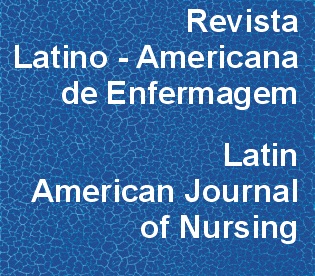Association between quality of life and prognosis of candidate patients for heart transplantation
a cross-sectional study
DOI:
https://doi.org/10.1590/1518-8345.2602.3054Keywords:
Heart Failure, Quality of Life, Heart Transplantation, Prognosis, Ambulatory Care, AdultAbstract
Objective: to verify the association between the prognostic scores and the quality of life of candidates for heart transplantation. Method: a descriptive cross-sectional study with a convenience sample of 32 outpatients applying to heart transplantation. The prognosis was rated by the Heart Failure Survival Score (HFSS) and the Seattle Heart Failure Model (SHFM); and the quality of life by the Minnesota Living With Heart Failure Questionnaire (MLHFQ) and the Kansas City Cardiomyopathy Questionnaire (KCCQ). The Pearson correlation test was applied. Results: the correlations found between general quality of life scores and prognostic scores were (HFSS/MLHFQ r = 0.21), (SHFM/MLHFQ r = 0.09), (HFSS/KCCQ r = -0.02), (SHFM/KCCQ r = -0.20). Conclusion: the weak correlation between the prognostic and quality of life scores suggests a lack of association between the measures, i.e., worse prognosis does not mean worse quality of life and the same statement is true in the opposite direction.
Downloads
Downloads
Published
Issue
Section
License
RLAE’s authorship concept is based on the substantial contribution by each of the individuals listed as authors, mainly in terms of conceiving and planning the research project, collecting or analyzing and interpreting data, writing and critical review. Indication of authors’ names under the article title is limited to six. If more, authors are listed on the online submission form under Acknowledgements. The possibility of including more than six authors will only be examined on multicenter studies, considering the explanations presented by the authors.Including names of authors whose contribution does not fit into the above criteria cannot be justified. Those names can be included in the Acknowledgements section.
Authors are fully responsible for the concepts disseminated in their manuscripts, which do not necessarily reflect the editors’ and editorial board’s opinion.



